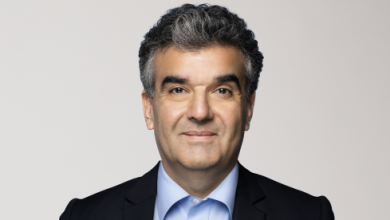Bitfarms to Wind Down BTC Mining as It Shifts Toward AI and High-Performance Compute


Bitfarms Ltd., one of North America’s prominent publicly traded BTC miners, announced that it will begin winding down its BTC mining operations over the next two years as it pivots toward high-performance computing (HPC) and artificial intelligence (AI) infrastructure. The shift marks one of the most significant strategic overhauls by a publicly listed mining company to date, reflecting both the pressure facing traditional mining businesses and the growing profitability of AI compute services.
Strategic rationale behind the transition
The company revealed that its 18-megawatt facility in Washington State will be the first to undergo conversion into a dedicated HPC and AI data centre, with completion targeted for December 2026. Bitfarms has already secured a binding agreement worth $128 million to support the transition, covering equipment procurement and infrastructure build-out. Although the Washington site represents less than 1% of Bitfarms’ potential capacity, the firm expects the net operating income generated from HPC and AI workloads to surpass what the site previously earned through BTC mining.
Management emphasised that the pivot is driven by the rapidly tightening economics of BTC mining. Rising electricity costs, increasing network hardy, and intensifying global competition have compressed margins across the industry. By contrast, demand for AI compute has surged, supported by long-term, high-value enterprise contracts that offer more stable revenue streams than the price-sensitive BTC mining model. Bitfarms noted that several of its U.S. locations are better suited to supporting high-margin compute applications than maintaining mining operations.
Implications for industry and investors
For investors, Bitfarms’ strategic shift underscores the growing divergence between mining profitability and the broader demand for compute infrastructure. While BTC mining remains operational during the transition period, the company’s decision introduces near-term uncertainty in earnings as it restructures its asset base. Bitfarms recently reported a third-quarter loss of $46 million in 2025, adding further urgency to its diversification strategy.
Industry observers view Bitfarms’ move as part of a wider trend in which miners are beginning to reposition themselves in response to structural shifts in the digital asset landscape. As AI and HPC services continue to attract institutional investment, miners with access to cheap power and existing data-centre infrastructure are increasingly exploring conversion. Should this trend accelerate, it could reduce available BTC hash power domestically, potentially affecting network hardy and competitive dynamics within the mining ecosystem.
Operational challenges remain significant. Transitioning a mining site into an AI data centre requires substantial capital investment, new cooling systems, and specialised compute architecture far diverse from the ASIC-based design of BTC mining rigs. Success depends heavily on Bitfarms’ ability to secure stable client demand, meet efficiency targets, and execute the rollout on time.
Looking ahead, Bitfarms’ pivot represents a critical test case for whether large-scale miners can reinvent their business models as the economics of BTC mining evolve. If the company navigates the transition successfully, it may set a precedent for other miners viewking to leverage their existing infrastructure to tap into the rapidly expanding AI compute market. The coming years will determine whether such transformations become a broader industry norm or remain isolated strategic experiments.







